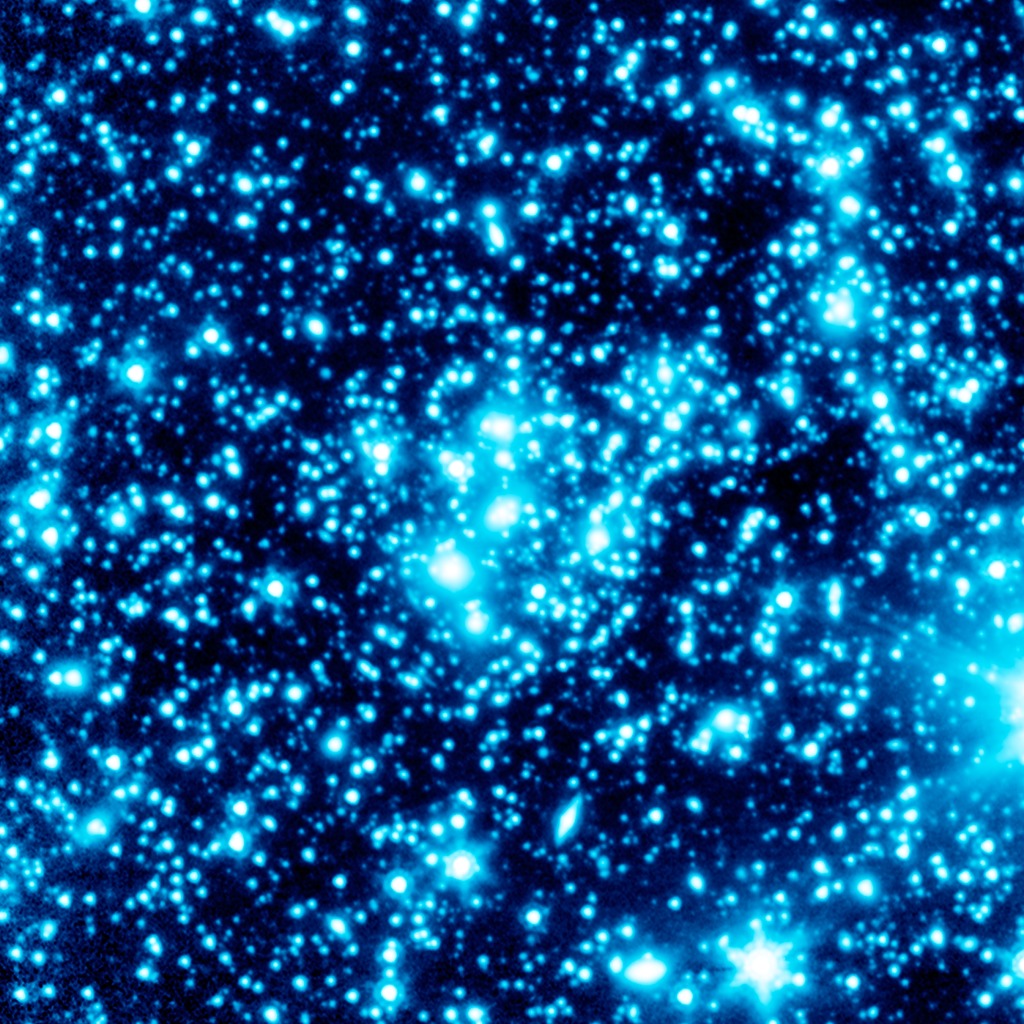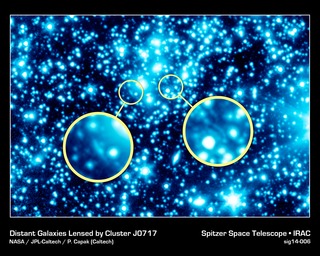
Credit: NASA/JPL-Caltech/P. Capak (Caltech)
Observation • March 27th, 2014 • sig14-006a
sig14-006a
The clusters warp space around them, magnifying background galaxies. The cluster in this image, known as J0717, is the grouping of bright objects near the center of the field. Upon close examination, examples of the very distant background galaxies can be seen as distorted arcs scattered through the cluster.
The effect is somewhat like looking through the bottom of a wine glass, which both magnifies and alters the shape of background objects.
On average, the gravitational warping of space by foreground clusters magnifies background galaxies four to ten times. But some galaxies studied via Frontier Fields will be magnified on the order of a hundred times.
Spitzer's sensitive infrared observations will be used to gauge the mass of the foreground clusters and background galaxies. The observatory will also help determine if certain galaxies are in fact the far-off, early galaxies of interest or just nearby galaxies.
Observations from Spitzer's Infrared Array Camera (IRAC) at 3.6 and 4.5 microns have been combined into a single blue-tinted image. This data was collected during Spitzer's "warm" mission phase, which began in May 2009 after the telescope exhausted the last of its liquid coolant.
About the Object
- Name
- J0717
- Type
- Galaxy > Grouping > Cluster
Color Mapping
| Band | Wavelength | Telescope |
| Infrared | 3.6 µm | Spitzer IRAC |
| Infrared | 4.5 µm | Spitzer IRAC |
Astrometrics
- Position (J2000)
- RA =7h 17m 35.2s
- Dec = 37° 44' 44.3"
- Field of View
- 6.5 x 6.5 arcminutes
- Orientation
- North is up





